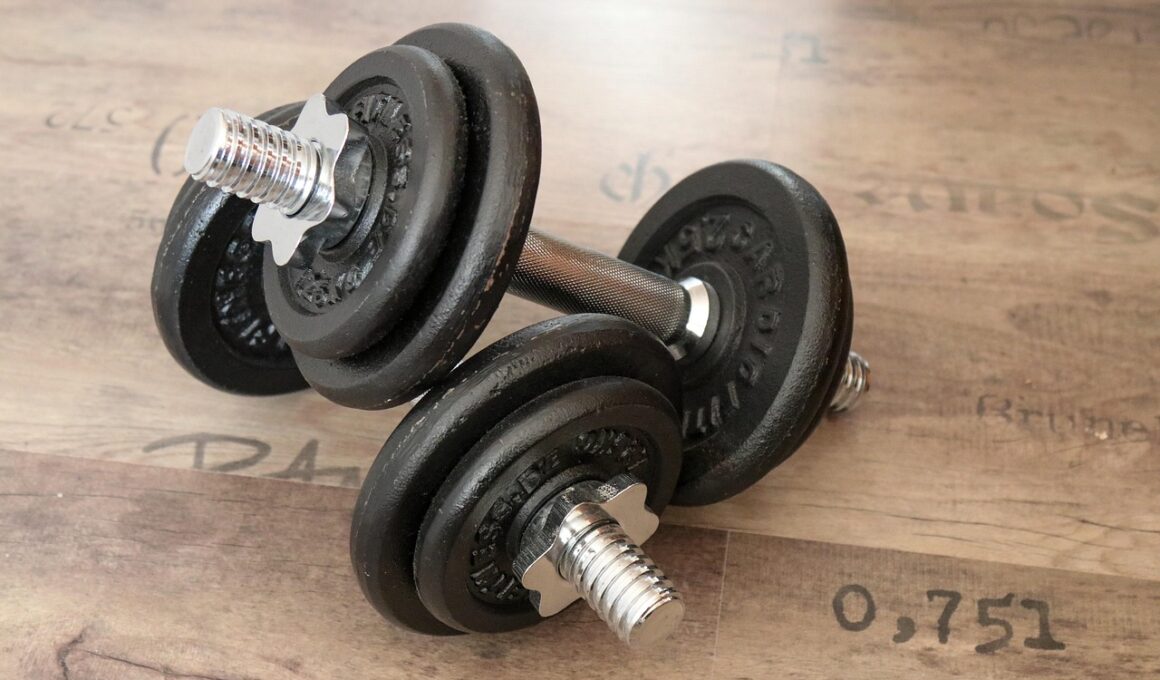Understanding Periodization in Bodybuilding
Bodybuilding requires not only intense training but also a strategic approach to maximize muscle growth and performance. Periodization refers to the systematic planning of athletic training by breaking down training into distinct phases. Each phase has a specific focus and intensity, designed to optimize progress while allowing adequate recovery. For competitors, this means transitioning between varying intensities and volumes in their training regimen. The main goal is to peak at the right time for competitions. Most bodybuilders will experience phases such as hypertrophy, strength, and power training. Each phase builds on the previous one, ultimately preparing the body for the demands of the competition. During hypertrophy phases, bodybuilders focus on higher volume at moderate weights to promote muscle size. In contrast, strength phases involve lifting heavier weights with lower repetitions. This variation in intensity not only prevents plateaus but also protects against injury. Adapting training loads helps in developing both muscular endurance and explosive strength, essential for competition day. Adopting a periodized approach is crucial for success in bodybuilding and improving overall athletic performance.
Training Variables to Manipulate
When designing a periodized training program for bodybuilding, several key variables can be manipulated. Firstly, the intensity and volume of workouts are fundamental. Intensity refers to the amount of weight lifted, while volume encompasses the total amount of work done, typically multiplied as sets times repetitions. Secondly, the frequency of training plays a significant role, with bodybuilders often training each muscle group multiple times per week to optimize growth. Additionally, rest intervals between sets can affect hormonal responses and recovery rates. Shorter rest can enhance muscular endurance, while longer rest maximizes strength gains. Next, exercise selection should vary throughout the cycle to hit muscles from different angles and promote balanced growth. Incorporating compound movements such as squats, deadlifts, and bench presses can increase overall strength. Accessory movements should focus on lagging body parts to ensure symmetry. Another variable is the tempo of lifts; manipulating the speed at which lifts are performed can provide varied stimulus. Finally, monitoring rates of perceived exertion (RPE) can guide adjustments within workouts. Keeping track of these variables ensures trainers can uphold a balanced, progress-driven approach.
Establishing a foundation with a well-structured periodization plan is essential. Competitors must establish clear training goals specific to their competition day. Consequently, this involves setting benchmarks throughout the year while preparing for significant lifts and reducing body fat leading into the contest. Early phases might focus on hypertrophy with work at 65-75% of the one-rep max (1RM), gradually advancing towards 80-90% 1RM as competitions near. As competitions approach, athletes should intentionally reduce training volume while slightly increasing intensity. This tapering phase helps to consolidate gains while allowing muscles to recover fully. Each lifter will respond uniquely based on genetics, previous training history, and the frequency of competitions. Thus, customizing periodization is highly recommended. Competitors might adjust their training history and current life stressors to optimize their preparedness for the competition. Regular assessments should be conducted to ensure targets are being met and adjustments made where necessary. This awareness allows bodybuilders to address potential weaknesses proactively. Committing to ongoing evaluation creates a competitive edge leading up to competition day, ensuring peak performance.
The nutrition aspect is an integral element influencing training intensity during preparation for bodybuilding competitions. Proper nutritional strategies should align with the peaks in training intensity. During hypertrophy phases, when volume is higher, individuals may require more calories to support recovery and growth. Focusing on macronutrient ratios while prioritizing protein intake ensures damaged muscle fibers repair efficiently. Conversely, during cutting phases, competitors need to factor decreased caloric needs to shed body fat while maintaining lean mass. A combination of high protein and moderate carbohydrates helps preserve muscle during a calorie deficit. Hydration also significantly impacts performance; adequate water intake ensures optimal muscle function and recovery. Bodybuilders should monitor electrolyte levels, as intense training can lead to imbalances. Utilizing supplements, such as branched-chain amino acids (BCAAs), support recovery, particularly in between intense workouts. As competitors adjust their nutritional intake alongside their training periods, this becomes crucial in achieving the desired physique leading into competition. Balancing nutrition with physical training lays the groundwork for successful competition preparation. This holistic approach will benefit competitors striving for success on stage.
Recovery: The Unsung Hero
Recovery plays a vital role in periodization and preparation for bodybuilding competitions. Competitors often train intensely, neglecting sufficient recovery leading up to competitions, which can lead to burnout or injury. Proper rest allows the body to repair tissues and replenish energy stores. Integrating rest days or active recovery days into the training plan is crucial; not every day should be strenuous. Techniques such as foam rolling, stretching, and sleep hygiene can significantly enhance recovery effectiveness. Sleep, in particular, is paramount in hormone regulation. Deep sleep has been shown to play a key role in muscle recovery and growth hormone production. Moreover, managing stress levels effectively before competitions can increase the likelihood of optimal performance outcomes. Using mindfulness techniques or adjusting daily routines may enhance mental preparedness. Practicing relaxation techniques helps competitors stay calm, minimizing competition-day anxiety. Listening to one’s body signals cues for recovery needs can sometimes dictate training volume or intensity. Adequate recovery works to ensure competitive readiness and continuity of performance gains over time. Athletes who prioritize rest typically find themselves more resilient against fatigue and able to train harder when it counts.
Planning strategically for competition involves psychological aspects alongside physical preparation. Mental conditioning can influence performance levels on stage. Bodybuilders benefit from developing their mental toughness to handle the stresses of competition and regular intense training. Visualization techniques, where athletes imagine themselves during their routines, can enhance confidence and control. Setting small, achievable milestones throughout training cycles allows athletes to celebrate progress, thus fostering a positive mindset. Furthermore, incorporating goal-setting strategies into training helps maintain focus and determination, adapting when necessary as setbacks occur. Adhering to deadlines for prep objectives, such as maintaining body weight or strength levels, can add an essential layer of accountability. Engaging in supportive communities, such as training partners and online forums, can provide the necessary encouragement and camaraderie needed during intense prep phases. All these psychological tools, when integrated into a yearly periodized structure, help bodybuilders sustain motivation and navigate the training journey to reduce anxiety before competitions.
Conclusion: Embracing the Periodization Journey
In conclusion, the significance of periodizing training intensity for bodybuilding competitions cannot be overstated. Effectively managing each phase of training determines success come competition day. Understanding fluctuations in intensity and volume optimizes muscle performance while safeguarding against injury. By strategically applying training concepts while considering nutrition and recovery practices, competitors can build a robust framework for success. Establishing personal goals and adapting based on performance enhances the once rigid approaches to bodybuilding. Overall, it promotes flexibility in training while achieving competitive readiness. Bodybuilding is as much a mental sport as it is physical; embracing both aspects is essential. Competitors should value the importance of communication with trainers and peers, sharing experiences to amplify their learning. Collectively, the journey towards achieving competing physique goals will be immensely rewarding. Ultimately, pursuing a holistic approach aligned with continuous assessment and adjustment is critical for long-term success. Realizing that there is no one-size-fits-all can aid in tailoring routines specifically for the individual. This level of dedication towards refining their training can significantly elevate a bodybuilder’s performance on the stage.
A well-thought-out plan aimed at periodizing intensity can lead to optimal performance, ultimately elevating bodybuilding prowess.


